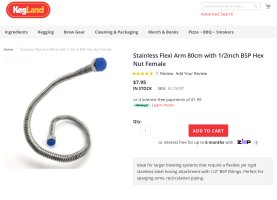Slightly tangential but please do bear with me:
OK so I ordered the 3.1.1. Now, the thing is that before I bought it, I had a conversation with the owner of the store (I live in India and this is one of the two official Kegland suppliers here). In India, it is fairly expensive (~400USD) and so I had to do my due diligence. Also, I only required it a couple of weeks later (traveling until then). Today, the store owner called me up and said that he had only one 3.1.1 left and, as luck would have it, someone else ordered one from the online store at the same time. He asked me if, since I could wait, he could give the one to the other person and that he had a new shipment coming in a couple of weeks. Well, that worked fine for me since I was in no particular hurry and the other person was. All good so far but here is the catch.
The new shipment that he was getting was for the Gen 4. And, obviously, it would cost more. How much more? In actuality, about a hundred dollars more. But, long story short, he offered a discount and, well, I got it for $470, which, I thought, well, a one-time purchase that should last me quite a few years, and long (perhaps unnecessary) story short, I now am the owner of a Gen 4 system and await delivery.
I look forward to brewing but any tips would be most appreciated! Have an excellent weekend everyone!
























































![Craft A Brew - Safale BE-256 Yeast - Fermentis - Belgian Ale Dry Yeast - For Belgian & Strong Ales - Ingredients for Home Brewing - Beer Making Supplies - [3 Pack]](https://m.media-amazon.com/images/I/51bcKEwQmWL._SL500_.jpg)

